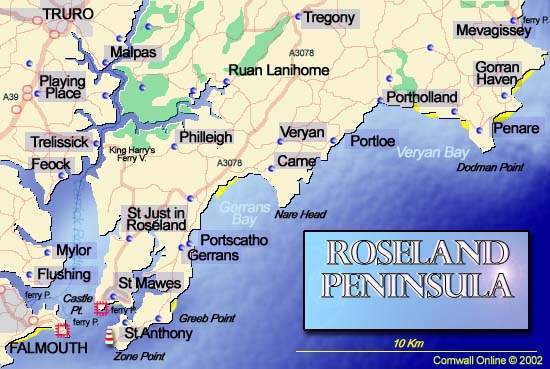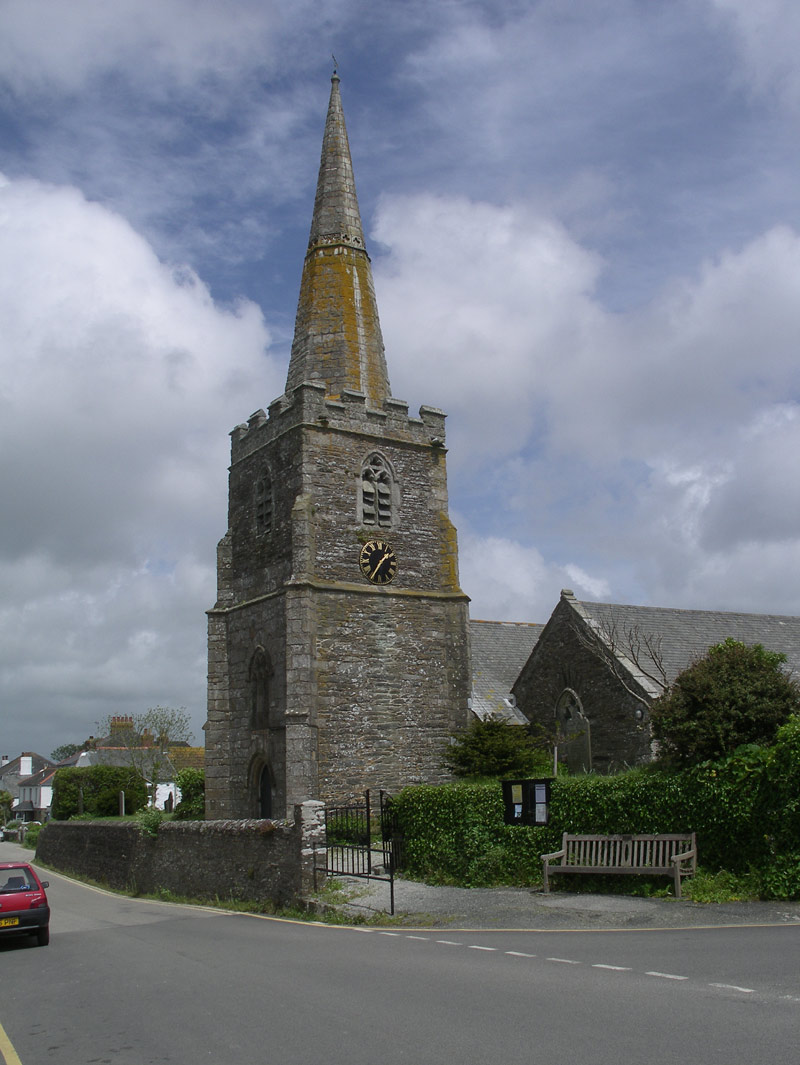

Portscatho is a charming and unspoilt fishing village with a picturesque harbour, lying in a sheltered east-facing cove in the corner of Gerrans Bay with stunning panoramic views along Gerrans Bay. Portscatho's proximity to many fine sandy beaches and its shelterd waters makes it a firm family favourite, with many vibrant rock pools to explore and clear waters offering safe swimming - making it an ideal family holiday destination.
The location of the village was chosen by the original fishermen looking for a base, for the pilchard fleets of the 'eighteenth and nineteenth centuries', that would provide shelter from the prevailing south-westerly winds. Portscatho is still an active fishing village with a number of small inshore fishing boats plying their trade in the local waters. The shelter that those original fishermen sought in the sheltered waters of Gerrans Bay, makes Portscatho ideal spot for kayaking and stand up paddleboarding. Many will recognise the villave from the television series, 'The Camomile Lawn', as it was used as the location for filming the series.
Portscatho village centre has several small shops as well as galleries and gift shops. A charming 18th century Cornish pub, 'The Plume of Feathers' is located a stones-throw from the water’s edge - serving local St Austell Ales, craft spirits and delicious local seafood dishes.
The quaint village of Gerrans lies at the top of the hill, just a short walk from the pretty harbour and beaches of Portscatho. Gerrans is thriving community with a range of facilities providing for local needs, including shops selling locally caught fish and garden produce, as well as a local crafts. Gerrans also has a garage, and a pub.
St Gerrans Church - known as 'the Ancient Church by the Sea,' is a dominant feature of the local landscape, standing on the brow of a hill overlooking the sea. The medieval octagonal spire of the parish church has acted as an invaluable landmark (daymark) to generations of local sailors and fishermen. The church was dedicated in 1261 - built on the site of an earlier Celtic Church. St Gerran's was named after Geraint - an 8th century Cornish chieftain who was converted to Christianity
The surrounding coastal path and countryside offers a variety of interesting walks with an abundance of wild flowers - especially in May and June.


St Gerrans 'the Ancient Church by the Sea'
the ancient name of Philleigh is Eglos-Ros, meaning Heath Church. The original church built in the middle of the 7th Century was replaced in the 13th Century. Unfortunately, today, only the tower remains from the 13th Century, the rest of the Church having been updated and restored in 1867.
Road maps as early as 1685 show the main road from London to Lands End ran through Philleigh. The road crossed the river at the King Harry Ferry and Tolverne Passage.
Ruan Lanihorne is a small village situated in Area of Outstanding Beauty (AONB), between the River Fal and its tributary the Ruan River approximately four miles (6.5 km) east-southeast of the City of Truro. It is a quiet little village that stands on what was once the old coach road from Penzance to London. The Village Church - dedicated to St. Rumonus in 1321 - is built of local grey, slate stone and is gothic in style. Recent restorations include the installation of a stained glass window in 1866. The font is dated about the 14th Century and is Norman.
The creek at Ruan Lanihorne is a bird lovers paradise as it provides a haven for waders and waterfowl. The gentle hills and leafy lanes are a joy for walking enthusiasts and explorers.
Known as the gateway to the Roseland Peninsula - Tregony was an active port in the 14th Century surrounded by busy woollen mills producing a rough serge known as Tregony cloth. Sailing vessels and craft of considerable size could navigate the Fal River right up to Tregony Bridge long before the Ports of Truro, Penryn and Falmouth were developed. However, due to tin streaming in the St. Stephens area the river eventually silted up and the harbour became unusable.
On the political front Tregony achieved its peak when James granted the town the constitution of Free Borough. Tregony was entitled to return two representatives to Westminster until the 1832 Reform Act when it had become one of the Rotten Boroughs.
As you climb up Tregony Hill you pass the site of a Roman Castle known as Treg-ney.
Modern Tregony offers the visitor a choice of accommodation within a thriving village community.